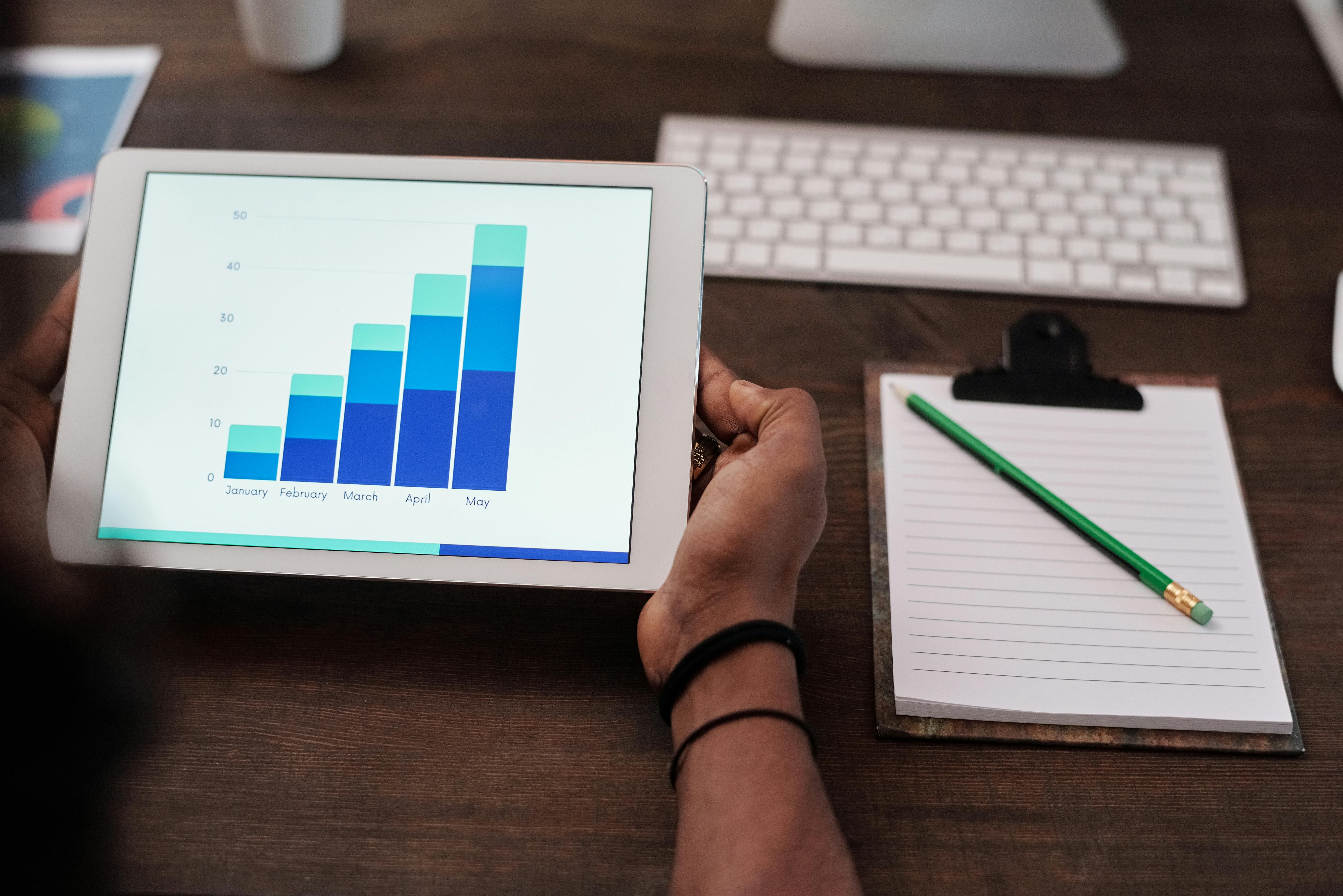Welcome to this guide on how you can utilize data analytics to make well-informed decisions for your restaurant or bar. By analyzing data on customer preferences, sales trends, and operational efficiency, you will be equipped to make strategic choices that can boost profitability and enhance customer satisfaction. Let’s dive into the world of data analytics and unlock the potential for your culinary business to thrive. Have you ever wondered how successful restaurants and bars seem to always know what their customers want and how to improve their business? The answer lies in data analytics. By analyzing data such as sales, customer reviews, and market trends, you can make informed decisions that will help your restaurant or bar thrive. In this article, we will explore how you can use data analytics to make smart choices for your business.
Understanding the Basics of Data Analytics
Data analytics involves using data to analyze trends, patterns, and other valuable information that can help you make strategic decisions for your restaurant or bar. By collecting and analyzing data from various sources, you can gain valuable insights into your business operations, customer preferences, and market trends.
You can start by collecting data such as:
- Sales figures
- Customer feedback and reviews
- Inventory levels
- Employee performance
- Market trends
By organizing and analyzing this data, you can identify areas of improvement, optimize your operations, and make informed decisions that will drive your business forward.
How to Collect Data for Your Restaurant or Bar
When it comes to collecting data for your restaurant or bar, there are several methods you can use. Some common data sources include:
-
Point of Sale (POS) Systems: POS systems can provide valuable data on sales figures, popular menu items, peak hours, and customer demographics.
-
Customer Feedback: Encourage customers to leave feedback and reviews on platforms such as Yelp, Google Reviews, or your restaurant’s website.
-
Inventory Management Systems: By tracking inventory levels and sales data, you can identify popular menu items and optimize your inventory management.
-
Employee Performance: Keep track of your employees’ performance metrics, such as sales numbers, customer satisfaction ratings, and attendance.
-
Market Research: Stay informed about market trends, competitor strategies, and customer preferences through industry reports, surveys, and customer interactions.
By collecting data from these sources, you can gain a comprehensive understanding of your restaurant or bar’s performance and make data-driven decisions to improve your business.
Analyzing Data for Business Insights
Once you have collected data for your restaurant or bar, the next step is to analyze it to uncover valuable insights. Data analysis involves examining data sets, identifying patterns, and drawing conclusions that can inform your business decisions.
Types of Data Analysis Techniques
There are several data analysis techniques you can use to gain insights into your business, including:
-
Descriptive Analysis: Descriptive analysis involves summarizing data to describe and understand key trends and patterns.
-
Predictive Analysis: Predictive analysis uses historical data to forecast future trends and outcomes, helping you anticipate customer preferences and market changes.
-
Prescriptive Analysis: Prescriptive analysis involves using data to recommend actions and strategies to improve business performance and drive growth.
By using these data analysis techniques, you can uncover valuable insights that will help you make informed decisions for your restaurant or bar.
Using Data Visualization Tools
Data visualization tools can help you present your data in a visual and easy-to-understand format. By creating charts, graphs, and dashboards, you can visualize key performance indicators, trends, and patterns within your data.
Some popular data visualization tools include:
- Tableau
- Power BI
- Google Data Studio
- Excel
By using these tools, you can enhance your data analysis process, communicate insights effectively, and make informed decisions based on clear and actionable visualizations.
Making Informed Decisions for Your Restaurant or Bar
Now that you have collected and analyzed data for your restaurant or bar, it’s time to make informed decisions that will drive your business forward. By using data analytics, you can identify opportunities for growth, optimize your operations, and enhance the overall customer experience.
Improving Menu Performance
One way to use data analytics to make informed decisions is by analyzing menu performance. By tracking sales data, customer feedback, and inventory levels, you can identify popular menu items, optimize pricing strategies, and introduce new dishes that cater to customer preferences.
Here is an example of a table to track menu performance:
| Menu Item | Sales (units) | Revenue ($) | Customer Rating |
|---|---|---|---|
| Burger | 150 | 1,500 | 4.5 |
| Salad | 100 | 800 | 4.0 |
| Pizza | 200 | 2,000 | 4.7 |
By analyzing this data, you can determine which menu items are performing well, which ones need improvement, and which new dishes to introduce to drive sales and customer satisfaction.
Optimizing Staff Performance
Another way to leverage data analytics is by optimizing staff performance. By analyzing employee sales numbers, customer satisfaction ratings, and attendance records, you can identify top-performing employees, provide targeted training and incentives, and improve overall staff efficiency.
Here is an example of a table to track employee performance:
| Employee | Sales ($) | Customer Rating | Attendance (%) |
|---|---|---|---|
| John | 5,000 | 4.7 | 95 |
| Sarah | 4,500 | 4.5 | 90 |
| Mike | 4,200 | 4.2 | 85 |
By analyzing this data, you can reward top-performing employees, address performance issues, and create a more efficient and positive work environment for your staff.
Enhancing Customer Experience
Lastly, data analytics can help you enhance the overall customer experience at your restaurant or bar. By analyzing customer feedback, reviews, and preferences, you can personalize marketing campaigns, improve service quality, and create a memorable dining experience for your guests.
Here is an example of a table to track customer feedback:
| Customer | Feedback | Rating (out of 5) |
|---|---|---|
| Jane | “Great food and service! Will definitely return.” | 5 |
| Mark | “The ambiance was nice, but the food was mediocre.” | 3 |
| Emily | “Friendly staff and delicious cocktails. Highly recommend!” | 4.5 |
By analyzing this data, you can address customer concerns, implement improvements, and create a positive and personalized experience for your guests.
Implementing a Data-Driven Strategy
To fully leverage data analytics for your restaurant or bar, it’s important to implement a data-driven strategy that aligns with your business goals and objectives. By integrating data analytics into your decision-making process, you can optimize your operations, drive growth, and stay ahead of the competition.
Setting Clear Objectives
Start by setting clear objectives for your data analytics strategy. Identify key performance indicators, such as sales targets, customer satisfaction ratings, and operational efficiency metrics, that will help you track progress and measure success.
Establishing Key Metrics
Next, establish key metrics that align with your business objectives. By tracking metrics such as average check size, customer retention rate, and employee productivity, you can monitor performance, identify areas for improvement, and make data-driven decisions to drive your business forward.
Implementing Data Analytics Tools
Invest in data analytics tools and software that are tailored to the needs of your restaurant or bar. Whether you choose a point of sale system with built-in analytics capabilities or a dedicated data analytics platform, make sure the tools you select can help you collect, analyze, and visualize data effectively.
Training Your Team
Provide training and support to your team to ensure they understand how to collect and interpret data effectively. By empowering your employees with data analytics skills, you can foster a culture of data-driven decision-making and improve overall business performance.
Conclusion
In conclusion, data analytics is a powerful tool that can help you make informed decisions for your restaurant or bar. By collecting and analyzing data from various sources, you can gain valuable insights into your business operations, customer preferences, and market trends. By leveraging data analytics to optimize menu performance, staff efficiency, and customer experience, you can drive growth, enhance operational efficiency, and create a memorable dining experience for your guests. Remember to implement a data-driven strategy that aligns with your business goals, set clear objectives, establish key metrics, invest in data analytics tools, and provide training to your team. By harnessing the power of data analytics, you can take your restaurant or bar to new heights of success.




